Last updated on
Discover simple yet stunning ways to transform your kitchen table into an inviting everyday centerpiece with these easy-to-follow decorating tips.
The kitchen table is the heart of any home. It’s where we gather to share meals, conversations, and create memories.
But how do you make it look good for everyday use? Decorating a kitchen table can seem like a daunting task, but with a few simple tips and tricks, you can transform your everyday dining experience into something special. In this article, we’ll explore some creative ideas for decorating your kitchen table that will make every meal feel like a special occasion.
So let’s dive in!
What's Inside
Choosing a Theme
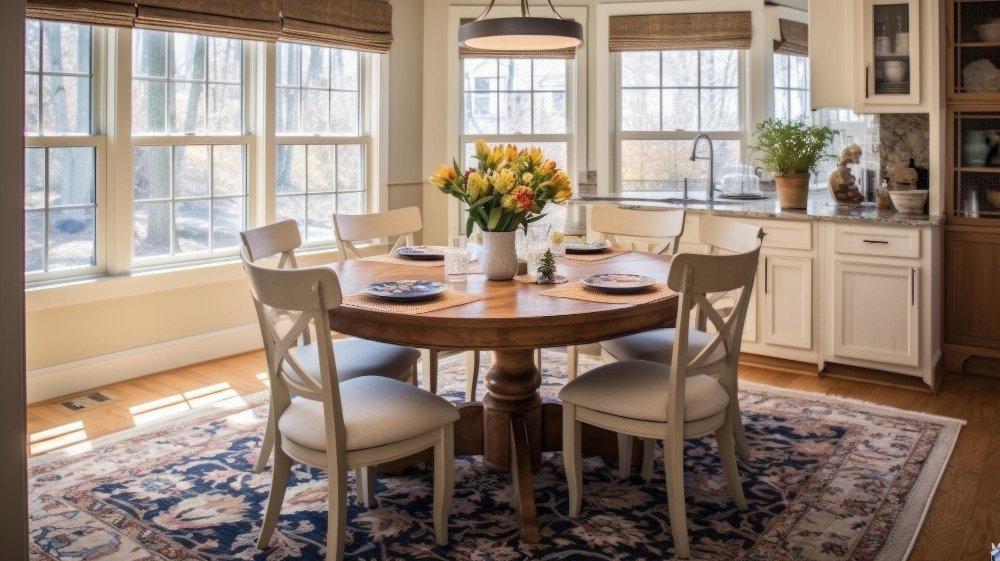
One of the first things to consider when decorating your kitchen table is choosing a theme. A theme can help guide your choices for everything from tablecloths and placemats to centerpieces and accent pieces.
Some popular themes include rustic, farmhouse, coastal, modern minimalist or bohemian.
When selecting a theme for your kitchen table decor, it’s important to keep in mind the overall style of your home. You want the decor on your kitchen table to complement rather than clash with other elements in the room.
For example, if you have an open-concept living space with modern furniture and clean lines throughout but love rustic accents like wooden bowls or woven placemats then try incorporating those into small details such as napkin rings or coasters instead of going all out on one particular style that may not fit well within its surroundings.
Selecting Tablecloth
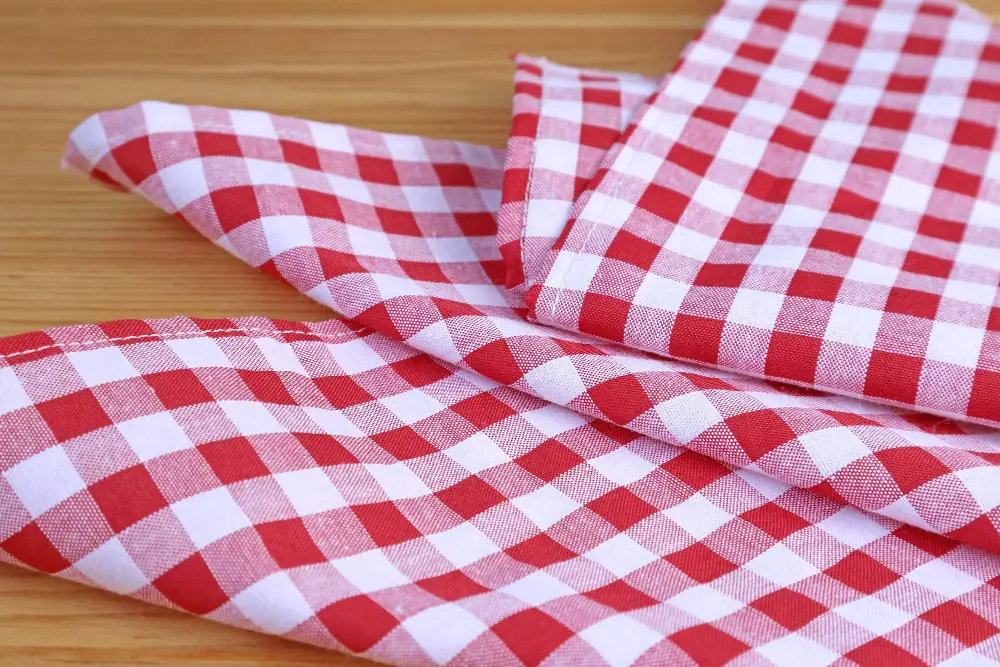
It sets the tone for your entire design and can make or break the look you’re going for. When selecting a tablecloth, consider both form and function.
You want something that looks great but is also practical enough to withstand everyday use.
If you have a wooden or rustic-style kitchen table, consider using a natural linen or cotton fabric in neutral colors like beige, white, gray, or brown to create an earthy feel that complements its surroundings.
For modern kitchens with glass tables and metal accents, try experimenting with bold patterns such as stripes or geometric shapes in bright colors like reds and blues to add some personality while still keeping it sleek.
Remember always to choose fabrics that are easy-care since they will be used daily; machine washable materials such as polyester blends are ideal options because they don’t wrinkle easily nor require ironing after washing them.
Picking Placemats
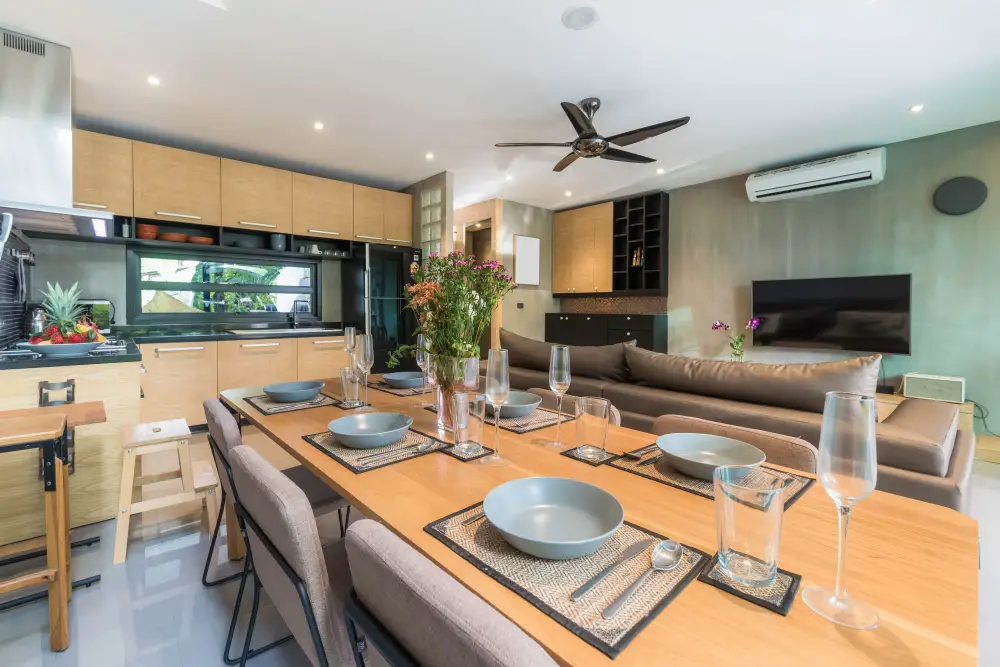
They also protect your table from spills and stains, making them both practical and stylish. When choosing placemats for everyday use, consider the size of your table, the style of your dishes, and the overall theme you want to achieve.
For a classic look that never goes out of style, choose neutral-colored placemats in shades like beige or gray. These colors will complement any dishware set you have while adding an elegant touch to your dining experience.
If you’re looking for something more colorful or patterned, opt for placemats with bold prints or bright hues that match with other elements on the table such as napkins or centerpieces.
Another option is using natural materials like bamboo or jute which can give an earthy feel while still being chic enough for everyday use.
Remember not only should they be visually appealing but also easy-to-clean since they’ll be used frequently.
Table Runner Options
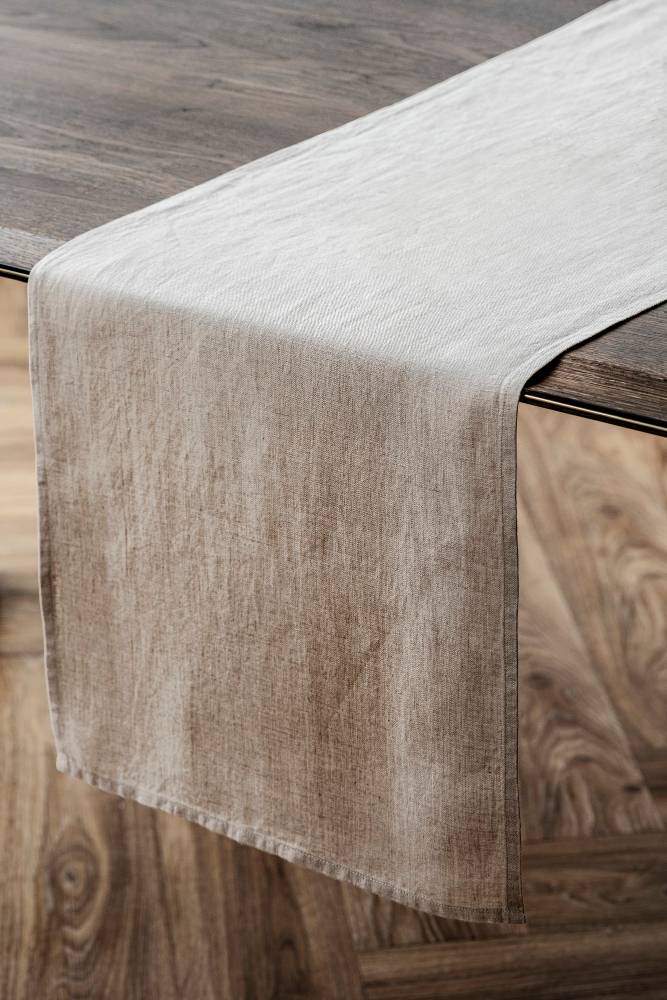
It’s also an excellent option for those who prefer not to use a full tablecloth. Table runners come in various materials such as cotton, linen, silk or even burlap.
When choosing a runner for your everyday dining experience consider the size of your table and the overall theme you want to achieve. A neutral-colored runner can be used year-round while seasonal patterns are perfect for adding festive touches during holidays.
For instance, if you have a rustic-themed kitchen with wooden furniture then opt-in for natural fabrics like jute or burlap runners that will complement the wood tones perfectly. If you’re looking at creating an elegant look then go with silk or satin runners that will give off luxurious vibes.
Everyday Centerpieces
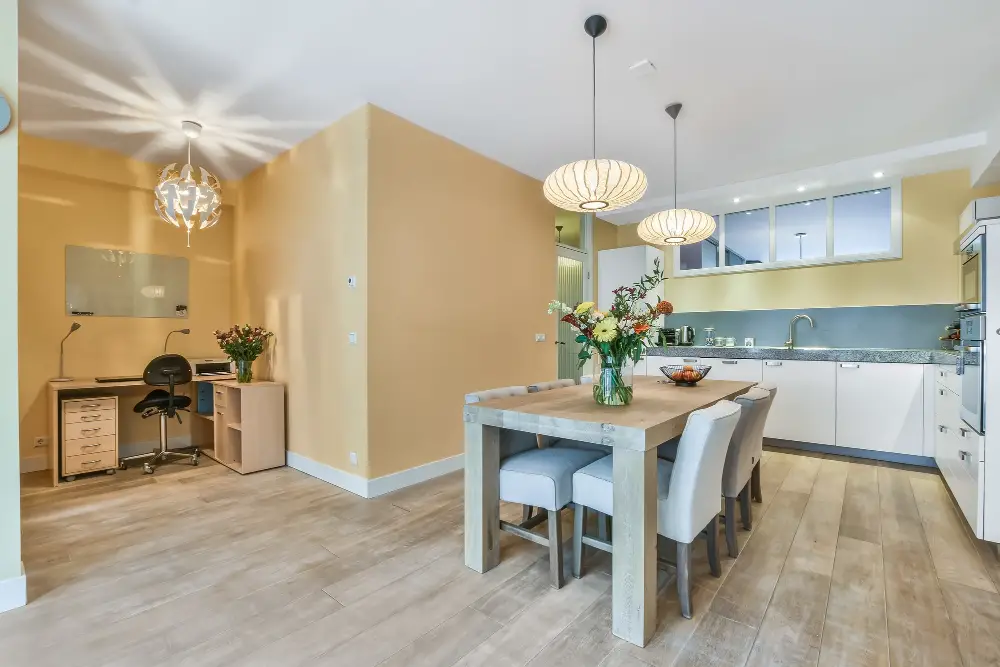
They add an extra touch of elegance and personality to your dining experience without being too overwhelming. The key is to choose something that complements the overall theme of your kitchen while also being functional.
One great option for an everyday centerpiece is a simple vase filled with fresh flowers or greenery. This adds color and life to the table while also providing a pleasant aroma during meals.
Another idea is using candles as centerpieces, which creates ambiance and warmth in any space. You can opt for scented candles or unscented ones depending on personal preference.
If you’re looking for something more unique, consider using fruit bowls or baskets as centerpieces instead of traditional flower arrangements. Not only do they look beautiful but they are practical too since you can eat them after dinner!
Napkin Selection
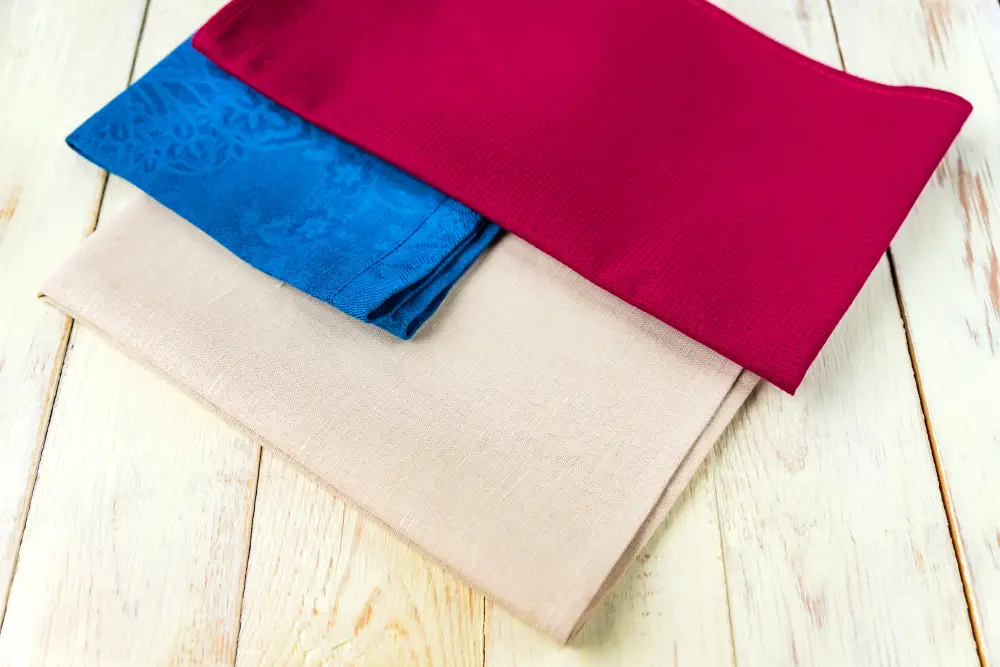
The right napkin selection can make all the difference in creating a cohesive look for your everyday dining experience.
Consider choosing napkins that complement the color scheme of your table setting or opt for neutral shades like white, beige, or gray. You could also experiment with patterns and textures to create visual interest on the table.
For a more formal look, consider using cloth napkins instead of paper ones. Cloth napkins not only elevate the overall aesthetic but are also eco-friendly as they can be washed and reused multiple times.
Remember to fold them neatly or use creative ways such as tying them with ribbons or placing them in decorative rings before placing them on each plate.
Everyday Dishware
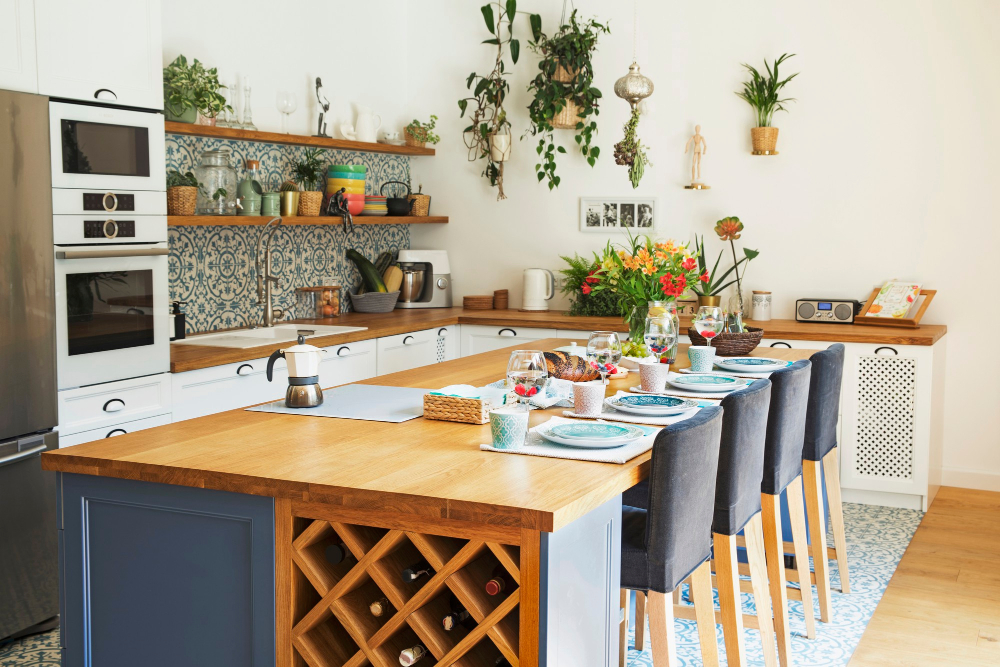
First and foremost is functionality. You want dishes that can withstand daily use and are easy to clean.
Opt for sturdy materials like ceramic or stoneware that won’t chip easily.
Next, think about the style of your dishes. Do you prefer classic white plates or something with a bit more personality? Consider mixing and matching different patterns or colors for an eclectic look.
Another thing to keep in mind is the size of your dishes. Make sure they fit comfortably on your table without overcrowding it.
Lastly, don’t forget about serving pieces like platters and bowls – these can add both function and style to your table setting.
Glassware Choices
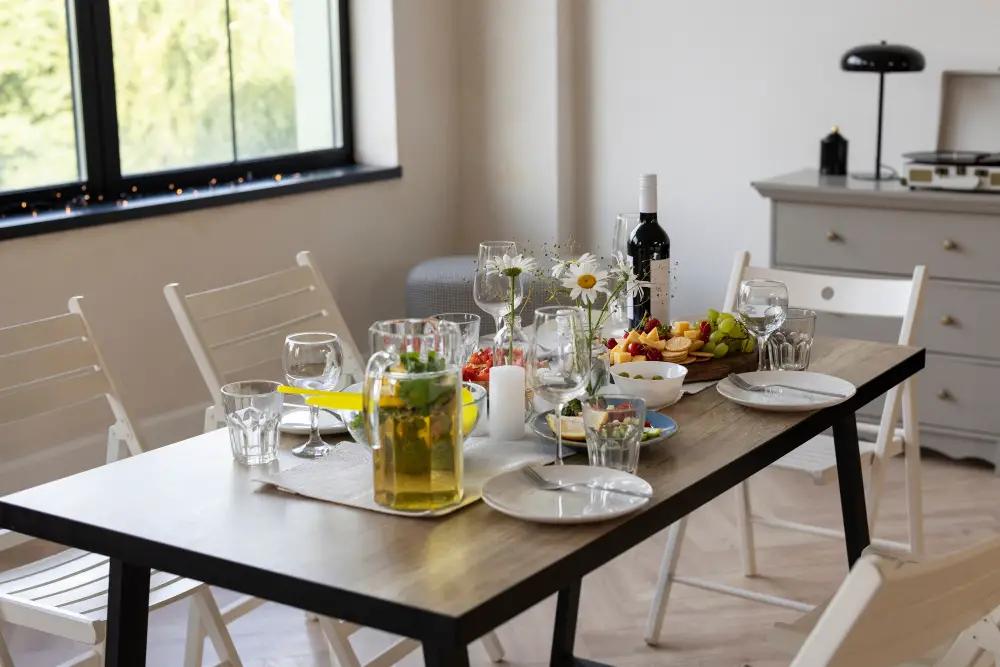
When selecting glassware, consider the type of drinks you’ll be serving and choose glasses that complement them. For example, wine glasses come in different shapes and sizes depending on the type of wine being served.
If you’re looking for a versatile option that works well with most beverages, go for clear or lightly tinted glasses. They are perfect for water, juice or soda as they don’t clash with any color scheme.
Another thing to keep in mind is durability; opt for sturdy options like tempered glass if you have kids around who might accidentally knock over a drink.
Cutlery Sets
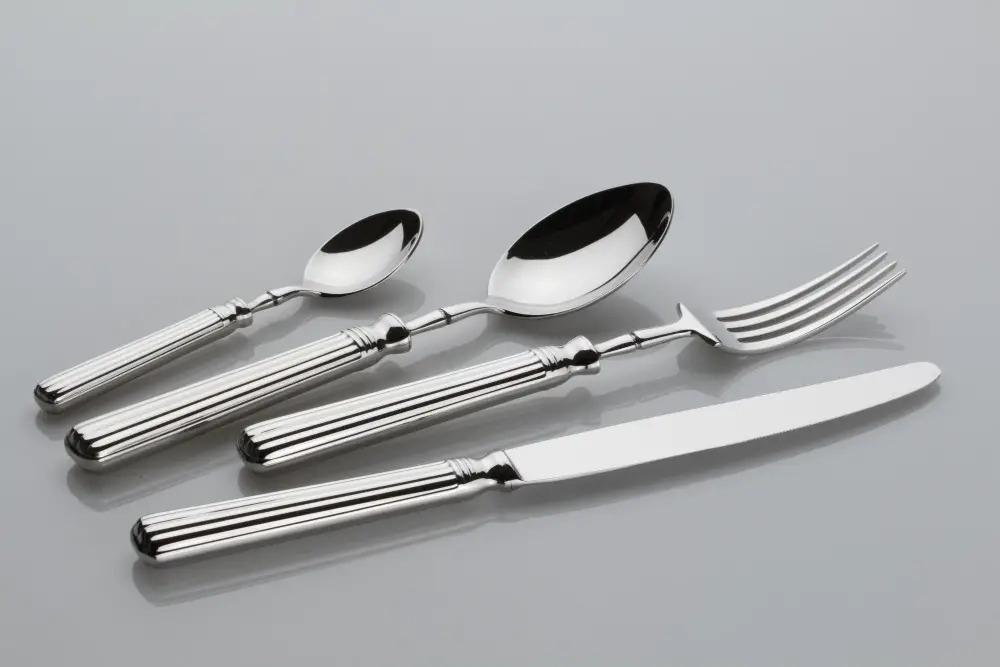
When selecting a cutlery set, consider the style and material of your existing dishware to ensure that everything matches well together. If you have a modern kitchen with sleek lines, then opt for flatware with clean lines and minimal embellishments.
On the other hand, if you prefer traditional or rustic decor styles, then choose sets made from natural materials like wood or bamboo. You can also mix and match different sets to create an eclectic look that reflects your personality.
When it comes to choosing between stainless steel or silver-plated options for everyday use, stainless steel is more practical as it’s durable and easy to maintain while still looking elegant on any table setting.
Accent Pieces

These small details can make a big impact on the overall aesthetic of your space. When choosing accent pieces, consider items that complement the theme or color scheme you have chosen for your table.
For example, if you’ve opted for a rustic farmhouse theme, consider adding wooden candlesticks or mason jar vases filled with wildflowers as accents. If you prefer something more modern and sleek, try incorporating metallic elements like copper napkin rings or geometric-shaped salt and pepper shakers.
Remember not to overdo it with too many accents; less is often more when it comes to decorating any space in your home. Choose one or two statement pieces that will draw attention without overwhelming the rest of the decor.
Table Lighting
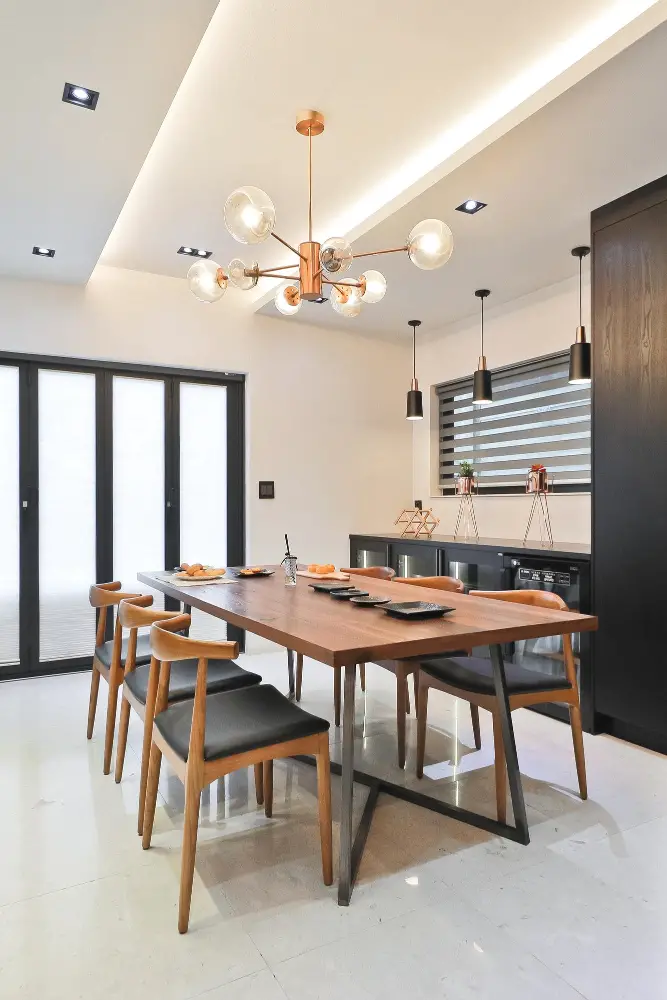
The right lighting can create a warm and inviting atmosphere that makes your everyday meals feel special. When it comes to table lighting, there are several options to consider.
Pendant lights are a popular choice for over-the-table lighting as they provide focused light while adding visual interest to the space.
If you have a larger dining area or want more flexibility with your table’s positioning, consider using floor lamps or sconces instead of overhead pendant lights. These types of fixtures can be moved around easily and offer more control over the direction of light.
Another option for table lighting is candles or tea lights placed in decorative candle holders or lanterns. This creates an intimate ambiance perfect for romantic dinners at home.
When selecting bulbs for your fixtures, opt for soft white bulbs that emit warm tones rather than harsh fluorescent ones that may make food look unappetizing under their glare.
Seasonal Touches
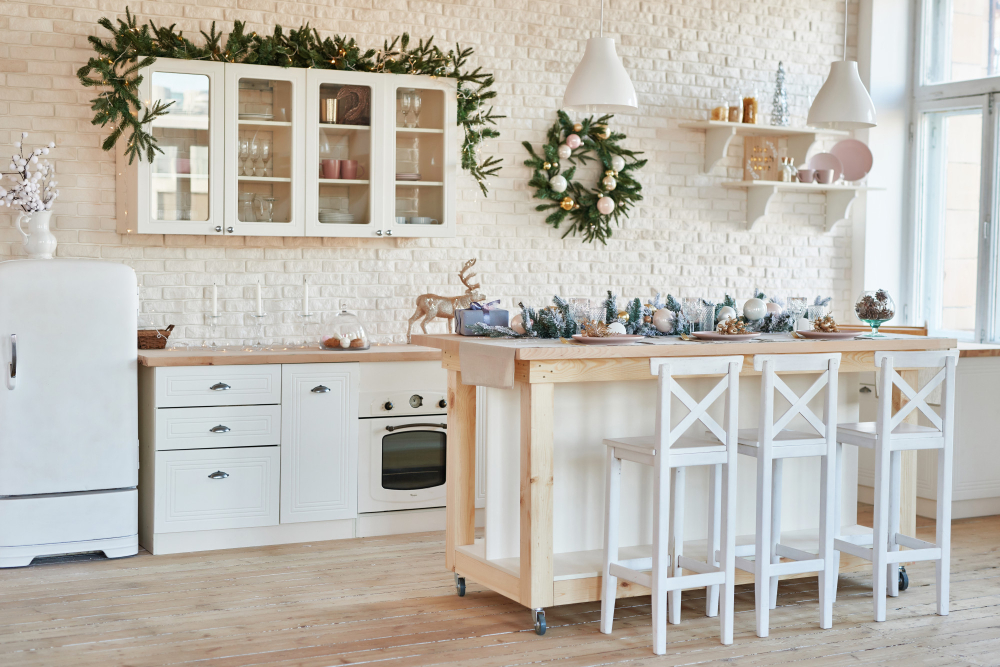
Whether it’s spring, summer, fall or winter, there are plenty of ways you can incorporate seasonal elements into your everyday decor. For example, in the springtime consider adding fresh flowers like tulips or daffodils as a centerpiece.
In the summertime switch out heavier linens for lighter fabrics like cotton or linen and add pops of bright colors with fruit centerpieces such as lemons in a bowl.
In autumn months bring warmth by using darker hues such as burnt orange and deep reds while incorporating natural elements like pumpkins on the table runner. During winter months use evergreen branches with pinecones for an earthy feel that will last throughout December.
Space Management
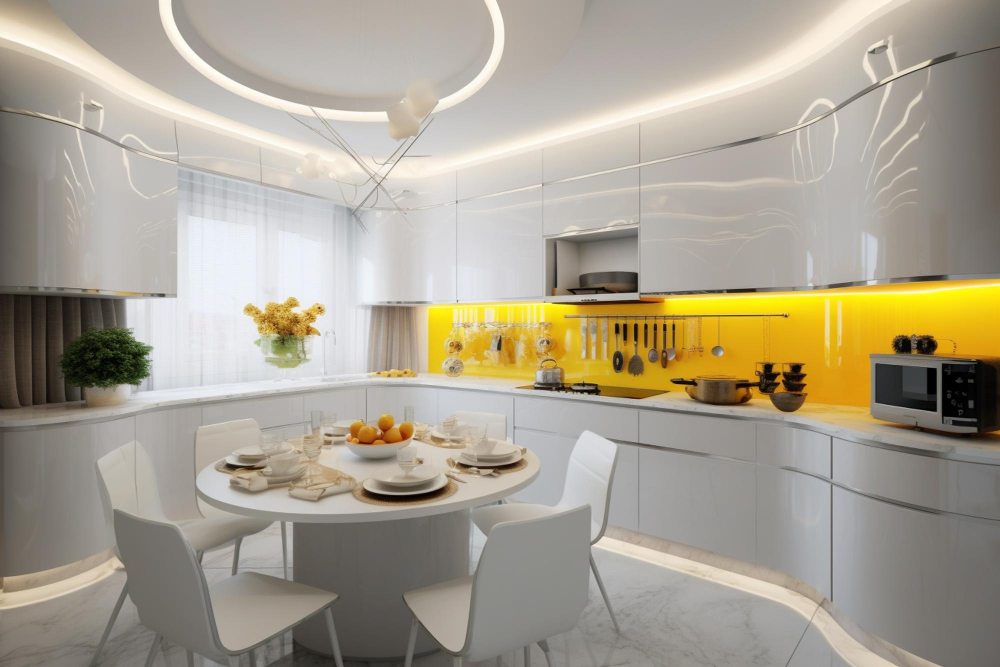
You want to make sure that you have enough room for all of your dishes and utensils while still leaving enough space for everyone to sit comfortably. If you have a small kitchen or dining area, consider using smaller plates and bowls or opting for a round table instead of a rectangular one.
Another way to maximize space on your kitchen table is by using multi-functional pieces such as stackable bowls or nesting serving trays. These items can be easily stored away when not in use, freeing up valuable tabletop real estate.
If you’re short on storage in the rest of your home, consider incorporating some storage solutions into the design of your everyday centerpiece. For example, decorative baskets can hold napkins and placemats while also adding texture and visual interest.
Accessorizing Your Table
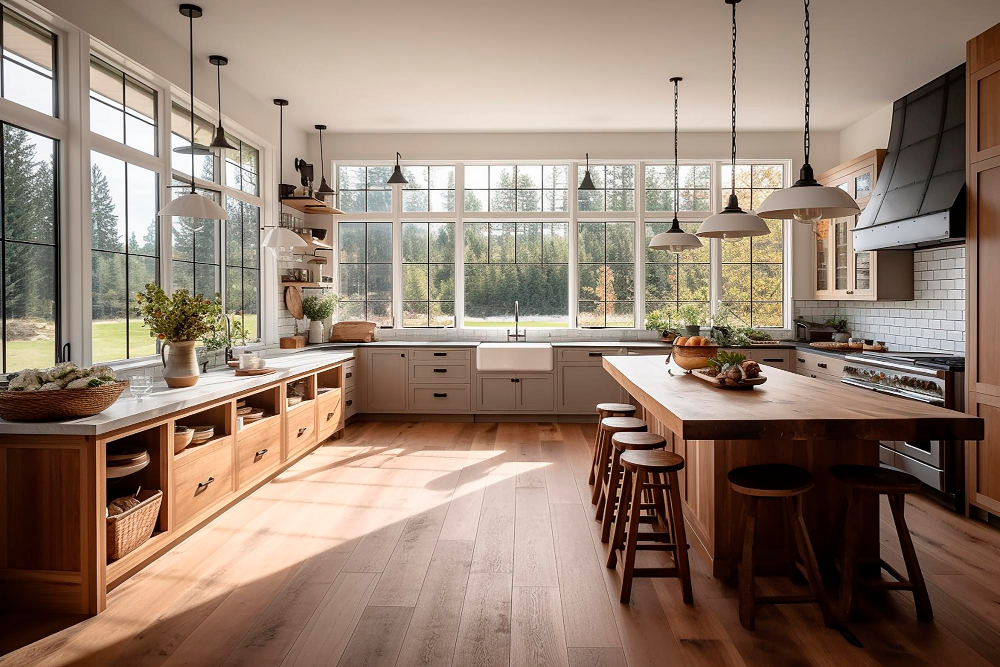
The right accessories can make all the difference in creating a warm and inviting atmosphere for you, your family, and guests. When it comes to accessorizing, less is often more.
You don’t want to overcrowd the table with too many items that may get in the way of enjoying meals or conversations.
Start by selecting one or two statement pieces that will serve as focal points on your kitchen table. These could be anything from decorative bowls filled with fruit or flowers, candlesticks of varying heights arranged together on a tray, or even an interesting sculpture.
Next up are smaller accent pieces such as salt and pepper shakers placed strategically around the table within easy reach of each guest’s place setting; these can also double up as conversation starters! Coasters are another essential accessory that not only protect surfaces but also add color and texture when chosen wisely.
Mixing Patterns and Textures
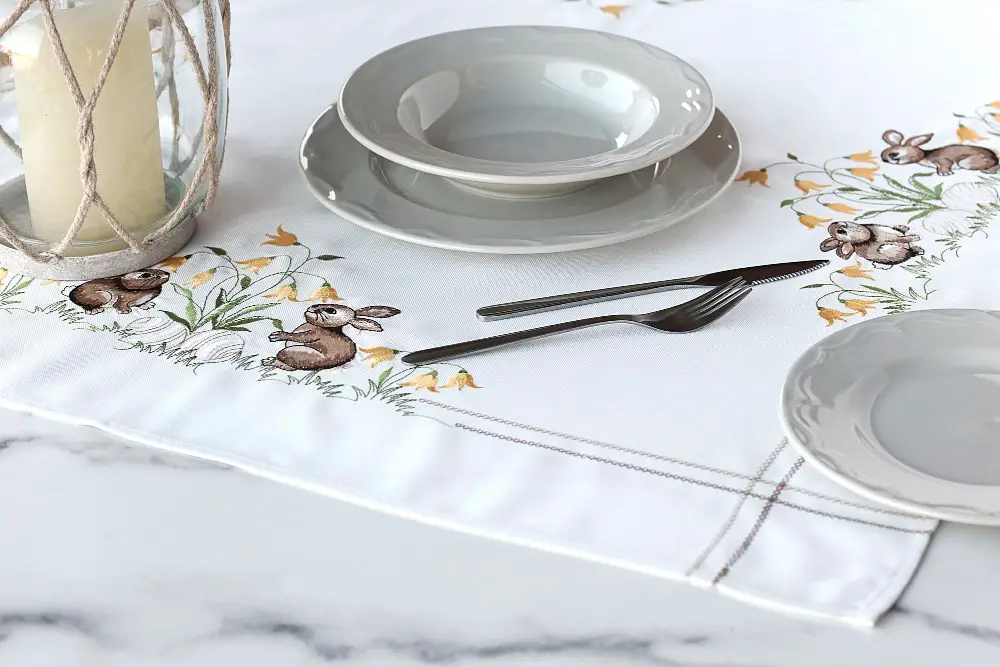
It can be a bit tricky if you’re not sure where to start. The key is finding patterns that complement each other without overwhelming the space.
Start with a neutral base, such as a solid-colored tablecloth or placemats. Then layer on different patterns in coordinating colors.
For example, you could pair striped napkins with floral plates or mix polka dots with geometric shapes.
When mixing textures, consider pairing rougher materials like burlap or linen with smoother surfaces like glassware or ceramic dishes for an interesting contrast.
Remember that less is often more when it comes to pattern mixing – stick to two or three complementary designs at most so as not to overwhelm the eye.
Plants As an Everyday Centerpiece
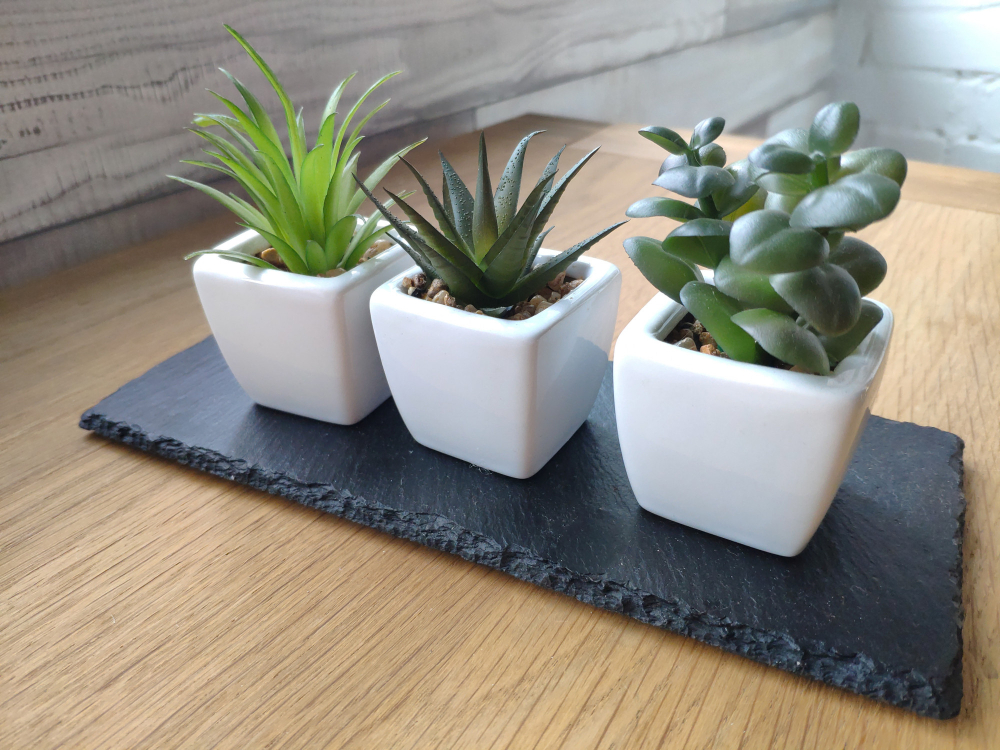
They bring a natural element into the space, making it feel fresh and inviting. Succulents, herbs, or small potted plants can be used as an everyday centerpiece that is both functional and beautiful.
When choosing plants for your kitchen table decor, consider their size and shape. You don’t want them to take up too much space or obstruct views across the table.
Small succulents in cute pots work well on smaller tables while larger leafy greens like ferns can make a statement on bigger ones.
Another thing you should keep in mind when using plants as centerpieces is maintenance – choose low-maintenance options if you’re not confident with plant care yet! Herbs like basil or mint are easy-to-care-for options that also double as ingredients for cooking.
Faux Florals
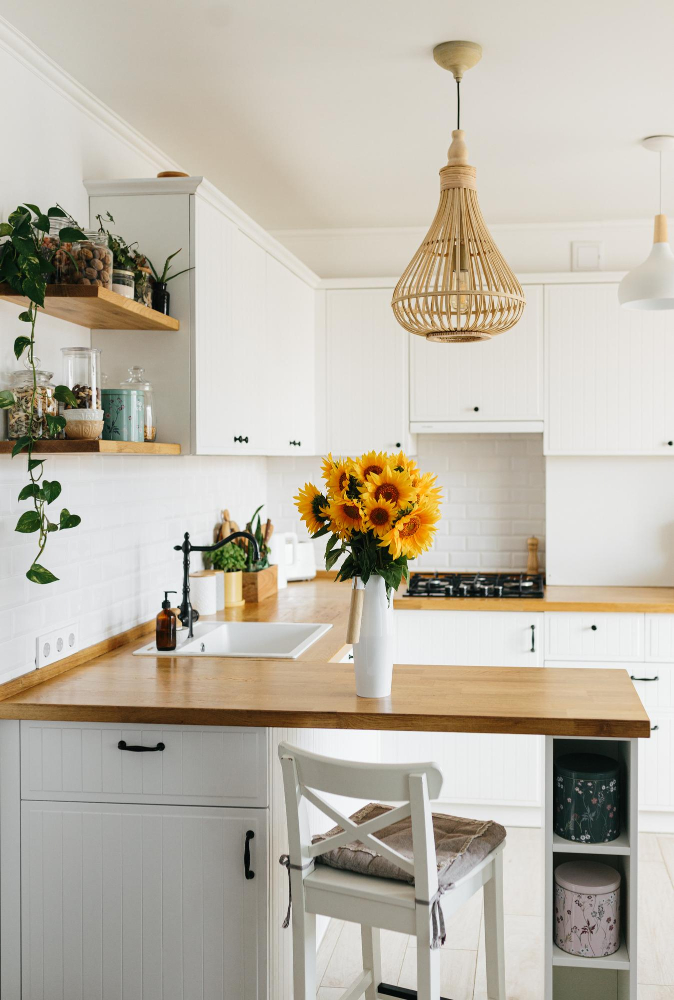
Not only do they look great year-round, but they also require no watering or upkeep. You can find high-quality silk flowers and greenery at most home decor stores or online retailers.
When choosing faux florals for your kitchen table, consider the colors and textures of your existing decor. If you have a neutral color scheme with lots of wood accents, opt for white or cream-colored flowers with green leaves to add some contrast without overwhelming the space.
If you have more colorful decor in your kitchen already, choose bold blooms like red roses or bright sunflowers.
Candles, Candlesticks, and Lanterns
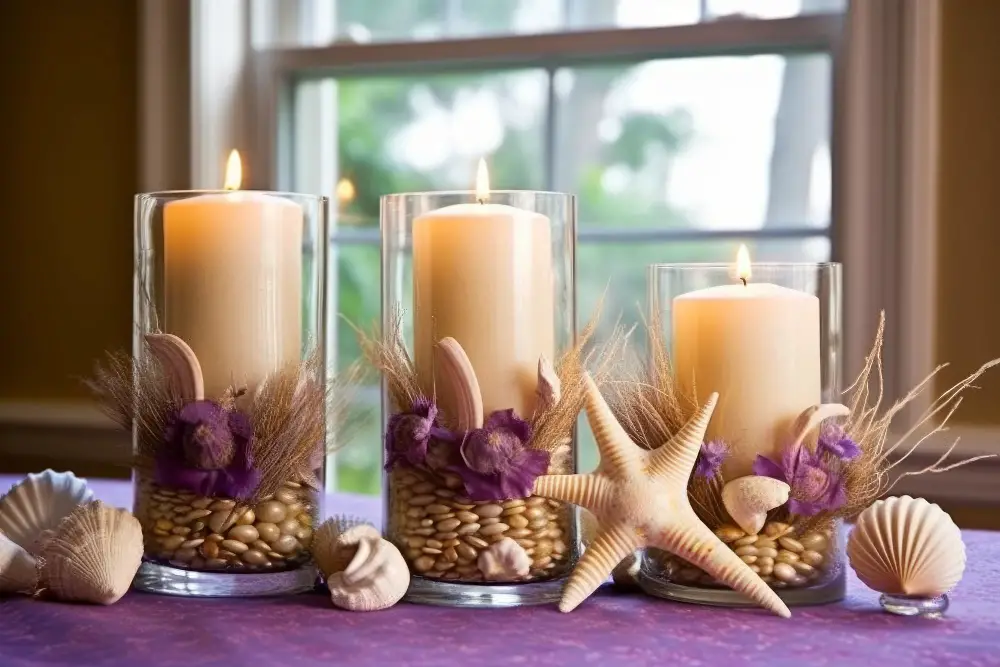
They come in various shapes, sizes, colors, and scents that can complement any decor style. You can use them as standalone centerpieces or mix them with other decorative elements for an eye-catching display.
When choosing candles or lanterns for your everyday table setting, consider the size of your table and the space available. If you have a small dining area or limited tabletop space on which to work with then opt for smaller-sized candles that won’t take up too much room.
For larger tables where there is more surface area available you may want to consider using taller candlesticks or multiple smaller ones grouped together in clusters.
Lanterns are also an excellent option if you’re looking for something unique yet functional. They provide soft lighting while adding visual interest without taking up too much space on the tabletop itself.
Fruits and Vegetables As Centerpieces
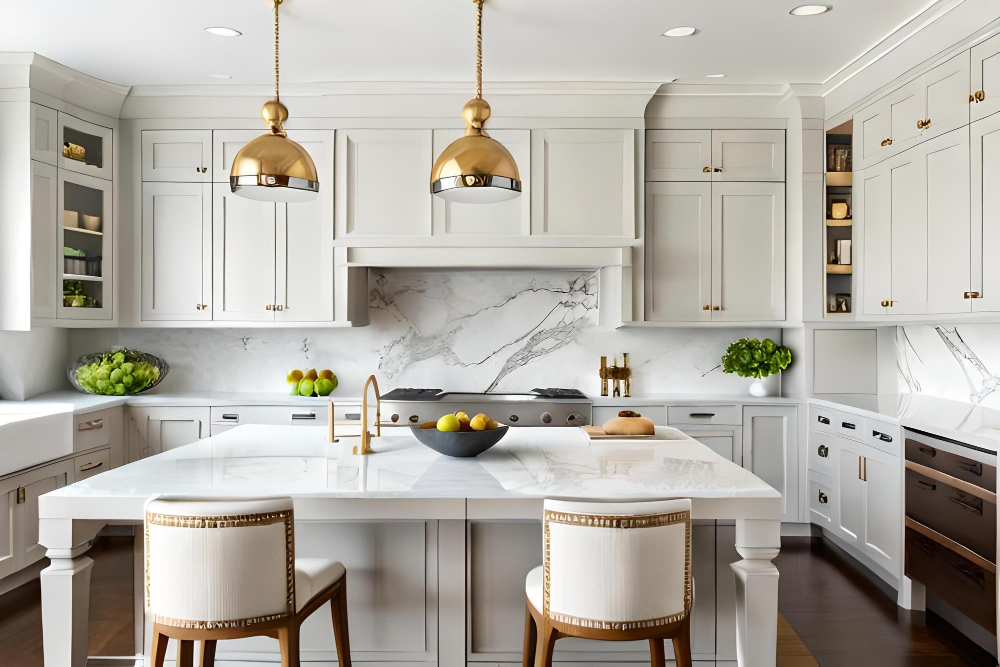
They add a pop of color and texture to the space while also being functional as a snack or ingredient in your meal. To create an eye-catching fruit or vegetable centerpiece, start by selecting produce that is fresh and vibrant in color.
Arrange them in a bowl or basket with some greenery such as herbs or leaves to add depth.
For example, you could use lemons, limes, oranges, apples or pears arranged on top of some fresh mint leaves for an elegant yet simple look. Alternatively try using seasonal fruits like berries during summer months which will give off bright colors that will complement any decor style.
Vegetables can be used too! A rustic wooden tray filled with carrots sticks alongside celery stalks would make for an excellent appetizer display before dinner time arrives.
Using Good Interior Design Principles
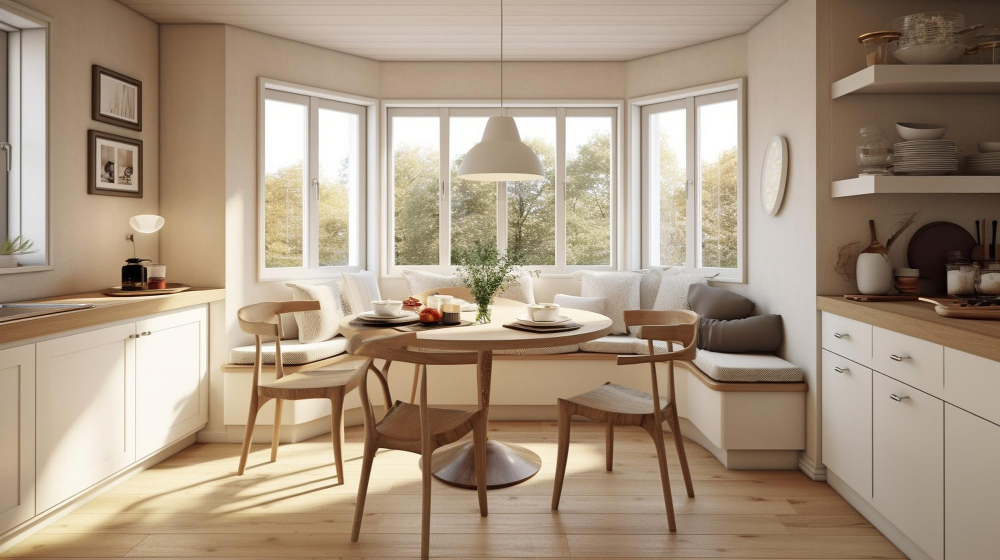
These principles will help you create a cohesive and visually appealing look that ties everything together. One of the most important things is to choose a color scheme or theme for your table decor and stick with it throughout all the elements you select.
Another key principle is balance – make sure that there’s an equal distribution of visual weight on either side of the centerpiece so that nothing looks lopsided or out of place. You can achieve this by using symmetry, such as placing matching candlesticks at each end of the table.
Proportionality is also essential when selecting items for your kitchen table decor; ensure they are not too big or small compared to other pieces on display. Don’t forget about texture! Mixing textures like wood, metal, glassware adds depth and interest while keeping within one color palette.
By following these simple interior design principles when decorating your kitchen table for everyday use will elevate its appearance from ordinary into something extraordinary without breaking any rules!
FAQ
What are some simple and budget-friendly centerpiece ideas for everyday kitchen table decoration?
Some budget-friendly centerpiece ideas for everyday kitchen table decoration include using a combination of bowls filled with fruits, small potted plants, and glass jars with candles.
How can you incorporate seasonal elements into your everyday kitchen table decor?
Incorporate seasonal elements into your everyday kitchen table decor by adding festive accents such as themed table linens, centerpiece arrangements, and decorative dishware that reflect the current season.
What are some practical tips for choosing everyday tableware that complements your kitchen table’s aesthetic?
To choose everyday tableware that complements your kitchen table’s aesthetic, consider the colors, materials, and shapes that match your table and overall kitchen design.




